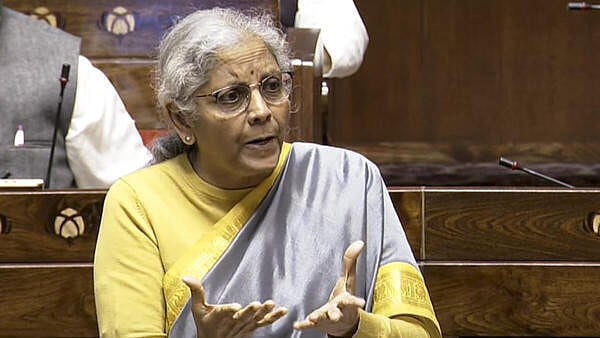
Union Finance Minister Nirmala Sitharaman
Credit: PTI Photo
New Delhi: Finance Minister Nirmala Sitharaman, on Thursday, tabled Income Tax Bill, 2025 in Lok Sabha. The bill seeks to replace six-decade old direct tax regulations with a simpler framework that would simplify tax processes and regulation.
While moving the Bill for introduction in Lok Sabha, Sitharaman requested Speaker Om Birla to refer the bill to a select committee of the House for review.
Sitharaman urged that the committee should submit its report by the first day of the next session of the house. The Speaker will decide on composition and rules of the panel.
The first part of the budget session concluded on Thursday with both houses of parliament adjourned Sine Die. The second part of the Budget session will be held from March 10 to April 4.
The Bill was introduced with a voice vote amid objections raised by MPs of the opposition parties who termed the changes introduced in the bill mechanical. However, Sitharaman refuted the changes and said substantial changes have been proposed in the draft bill. The new Act called Income-tax Act, 2025 is likely to come into force from April 1, 2026.
Although the new Act is unlikely to have any financial implications in terms of liabilities for individuals and corporations, it would make the direct tax framework easy to understand for the common people, analysts said.
“At first glance, it aims to simplify the legislation by consolidating similar provisions, eliminating obsolete sections, and presenting some information in a tabular format,” said Sunil Badala, head of tax, KPMG in India.
The bill simplifies the tax framework by removing numerous provisos and explanations, incorporating them into new clauses. It introduces an 'interpretation' section to define key terms and reformulates many provisions into tables for improved readability, said Rohinton Sidhwa, Partner at Deloitte India.
The bill introduces a new concept of “tax year”, which is defined as the 12-month period starting from April 1, and removes the term “assessment year”. It has added virtual digital assets, such as cryptocurrency, in the definition of property to be considered as a capital asset of the assessee.
Other notable changes include reorganising major tax exemptions into distinct schedules for better clarity. Unlike the 1961 Act, the new Bill seeks to empower the Central Board of Direct Taxes (CBDT) to establish tax administration rules and implement digital tax monitoring systems.
However, the key features including the tax rates and structures would remain unchanged. “The Bill continues to reference certain definitions from the Income-tax Act, 1961, and there are many cross-references between tables, which could make the reading slightly cumbersome,” said Badala.